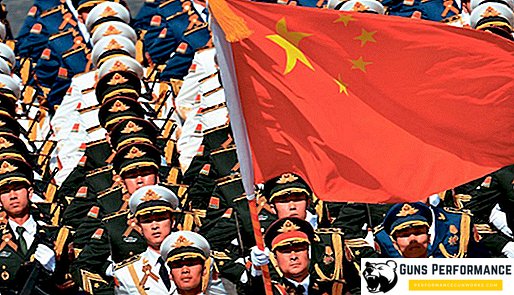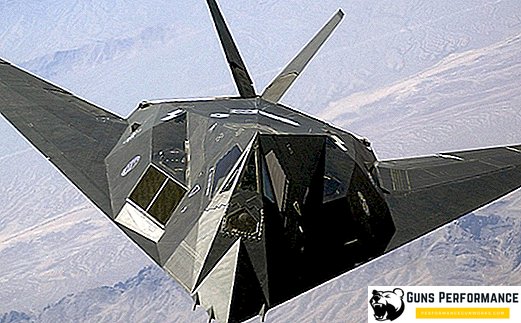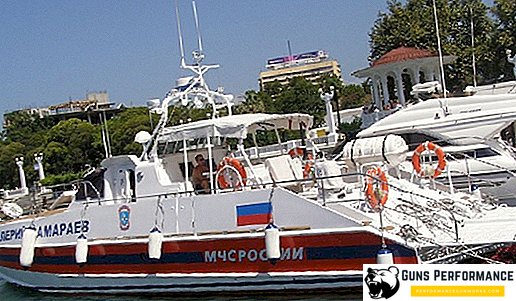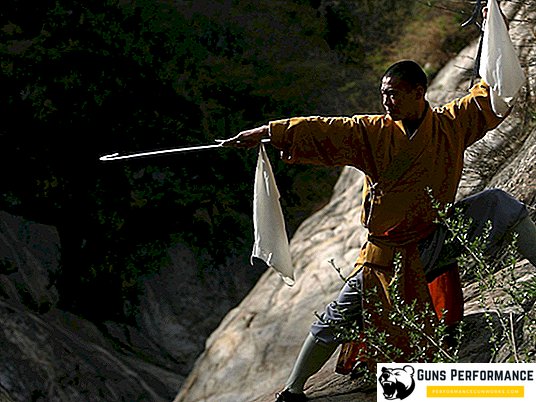The Islamic Republic of Iran is one of the most unique state formations on the modern political map of the world. Despite the fact that the history of the state goes back to hoary antiquity, Iran has only recently taken the path of a coherent and orderly system of government. For thousands of years in this country ruled by kings, emirs and sheikhs. Only at the end of the 20th century, the country received for the first time modern government bodies, among which the most important is the post of President of Iran.
Iran in the era of the rule of the Shah regime
Among Asian countries, Iran is one of the few states that have managed throughout its history to preserve independence and sovereignty. While political regimes changed around the political conjuncture, and countries and states turned into colonies and occupied territories, Iran continued on its course. First, the Persian kings, a little later, the emirs and caliphs set goals and objectives not only to expand the borders of their own empire, but also to preserve the national and geographical unity of the state. The Persians always strictly related to their national identification, thanks to which there is today's Iran within the modern borders.

The state resisted in the period of the power of the Arabs. Persia retained its identity during the invasion of Tamerlane's troops. The only factor reflected in the subsequent historical development of the state was Islam, which spread throughout the Middle East and Central Asia. Until 1979, Iran represented a typical model of absolute monarchy, where all legislative and executive power is concentrated in the hands of an influential monarch. In a country with a population of 80 million people, fifty-four years was ruled by shahs from the Pahlavi dynasty. However, despite the commitment to the absolutism of the Shah’s authorities, both the Iranian Shahs Reza Pahlavi - the father and Mohammed Reza Pahlavi - the son sought to make Iran a secular state. During the rule of the Shahs from the Pahlavi dynasty, Iran is becoming one of the leading political players in Central Asia, managing to preserve its independence and sovereignty.

The last Shah of Iran, Mohammed Reza Pahlavi, who came to power in 1941, was known as a secular ruler, partially educated in Switzerland. After Shah Reza Pahlavi in September 1941, under pressure from the USSR and Great Britain, was forced to abdicate, the throne was transferred to twenty two-year-old Mohammed Reza. From this period the monarchy in Iran reached the final stage of its development. The young Shah managed to save the country's territory from the influence of the occupational administration of the Allied forces during World War II. Through the efforts of the Shah, Iran in the postwar period has become a regional leader.
However, many actions and decisions of the Shah were contradictory. The new chronology introduced by Mohammed Reza Pahlavi, originating from the Achaemenid dynasty, provoked violent protests among the clergy and in civil society. Attempts to introduce new secular laws in the country, curtailing the norms of Sharia, led to the emergence of open opposition to the shah by the clergy. During the reign of the Shah, there is a sharp struggle with the government, which is headed by ministers who are under the influence of Western countries. The attempted coup of 1953 ended with the establishment of an authoritarian regime in the country. Seeing his precarious political position inside the country, and not having achieved the realization of his political will, the Shah's regime moves to tough autocracy.

Since 1973, all other political parties and movements have been banned in Iran. Any criticism of the ruling regime and the Shah directly is punished according to the law of the Sharia Court. The only political force in Iran is the Rastokhez ruling party, which includes the country's prime minister and most of the current ministers. During these years, the internal life of the Iranian society is under the hood of the secret police, created by the Shah in response to the active actions of the opposition. The outcome of the anti-people policy of the Shah was the Islamic Revolution of 1979, which overthrew the Shah's regime.
Iran after the 1979 Islamic Revolution
The fall of the shah's regime in 1979 marked the end of a thousand-year monarchy. The country has entered a transitional period, which was marked by the search for new ways of managing the state. In February 1979, the Iranian Shiite spiritual leader Ayatollah Khomeini returned to the country. With his arrival, all power in the country passes into the hands of the higher ranks of the clergy, who set the course for the Islamization of the state. On April 1, 1979, the country's population participates in a nationwide referendum on matters of government, the results of which Iran is declared an Islamic republic with a theocratic form of government.

In December of the same year, the country receives a new Basic Law. The 1979 Constitution of the Islamic Republic of Iran established a new system of government in the country — theocracy (the authority of the clergy); the presidency of the country is being introduced. In addition to the Majlis, new legislative and executive bodies - the Council of Experts, the Guardians Council and the Council of Expediency - are starting work in the country. The head of state in accordance with the text of the constitution becomes the Supreme Leader of Iran. For this post, a person of ecclesiastical authority is elected, who enjoys the highest authority among the clergy. The top leader is a life title, while the term of office of the Iranian president is 4 years. The current president of the country can hold office for two consecutive terms if he becomes the winner of the next presidential election. A candidate for the country's presidency may be a person whose candidacy has been approved by the Board of Guardians.

The President of Iran is the nominal head of the Republic and does not have much political influence in the country. All decrees and decisions of the president need to be agreed with the Supreme Leader. The duties of the President of the country include representational functions, and after the abolition of the post of Prime Minister, the President of the country is the head of the executive branch.

The main powers of the Iranian President are as follows:
- guarantee the operation of the Constitution on the territory of the country;
- to represent the Islamic Republic of Iran in the international arena;
- accept credentials of ambassadors of foreign countries, coordinate the diplomatic service of the state;
- appoint members of the government;
- coordinate the work of ministers.
The president has ten vice-presidents. The composition of the Council of Ministers of the Islamic Republic of Iran is defined in 21 ministerial positions. All candidates are submitted by the president for consideration and approval by the parliament of the country. As for the leaders of the military and intelligence services, their candidacies are coordinated with the Supreme Leader.

Iran's first president
The first presidential elections in the country after the Islamic revolution were held on January 25, 1980. Despite the fact that three candidates nominally participated in the pre-election race, Ayatolla Khomeini’s associate Sayyed Abolhasan Banisadr was considered the leader of the election campaign. This was confirmed by the results of subsequent elections, in which the candidate of the ruling spiritual elite won 75.5% of the vote. Two weeks later, on February 4, 1979, the inauguration of the first President of the Islamic Republic of Iran was held at the military hospital where Ayatollah Khomeini was being treated.
It is important to note that, despite the four years of authority given by the Constitution, the status of the president was not distinguished by special privileges. The head of state could at any time be removed from office. For this, one decision of the Supreme Leader was enough. That is exactly what happened with the first president of Iran.

Up to this point Banisadr was in exile, inspiring from abroad preparations for the overthrow of the Shah's regime. Returning to the country after the Islamic Revolution, Banisadr, as the right hand of Khomeini, became part of the provisional Islamic Revolutionary Council. After the formation of the transitional government, he was entrusted with the post of Minister of Finance and Economy. In parallel with the Ministry of Economy, Banisadr serves as Minister of Foreign Affairs of the Islamic Republic of Iran. Given the great prestige within the country and the confidence of the clergy, Banisadra is included in the Council of Experts, which was engaged in the preparation and editing of the new Constitution. As a trusted person, the Supreme Leader of Banisadr, after agreeing in the Council of Experts, nominates her candidacy for the presidency of Iran.
In the first months of his tenure, Banisadr was forced to face great difficulties. The country was torn by internal contradictions, which were fueled by radical Islamists. The external political situation did not differ in complacency, since after the seizure in November 1979 of the American Embassy, Iran was completely isolated from the civilized world. Iran’s neighbor, a Sunni Iraq, took advantage of Iran’s internal instability and international isolation. In September 1980, with the invasion of Iraqi troops in the Iranian province of Khuzestan, the Iran-Iraq war began.

The war caught not only the Iranian army. The Iranian government was also not ready for this turn of events. It should be noted that in the first years of the Republic, the President of the country performed the functions of the Supreme Commander, therefore it was Sayyed Abolhasan Banisadra who was considered the culprit of serious failures on the front. After the Iraqi forces managed to inflict a number of sensitive defeats on the Iranian armed forces in the first months of the war, the relationship between the Supreme Leader and the first President of the country finally deteriorated. Banisadra was accused of failing to lead the country's armed forces. As a result, by the decision of Ayatolla Khomeini, the president was removed from the command of the troops, and a few days later, on June 21, 1981, the Majlis issued a decree to impeach the president.

This was followed by an attempt by the Iranian authorities to arrest the former president of the country, but Banisadru managed to secretly leave the country with the help of loyal officers of the Iranian army.
Subsequent Presidents of Iran
The ease with which the president was removed from office in Iran suggests that all the threads of government in the country are fully concentrated in the hands of the highest spiritual leader. The action of the Constitution in such conditions looked formal and could not provide the country with a stable and durable institution of civil authority.
After the impeachment of Banisadr, Mohammad Ali Rajai, who before these events headed the government of the Islamic Republic of Iran, became the next president. In parallel with the post of Prime Minister, Rajai served as Minister of Foreign Affairs. The appointment to the post of the new Head of State took place on August 2, 1981 and was based on the results of consultations between the Supreme Leader and the Council of Experts.
With the new head of government, higher clergy pinned certain hopes on stabilizing the internal situation in the country. In the first place, this concerned the social and public sphere of Iranian society. As Prime Minister, Rajai became the inspiration for the Iranian cultural revolution, which envisaged a massive Islamization of civil society, accompanied by a rejection of the cultural values of the West. However, just a month after his appointment, on August 30, 1981, the second president of Iran was killed as a result of a terrorist act.
Together with the president, a terrorist attack claimed the lives of the country's prime minister, Bahonar, and three other members of the government.
The last five presidents of the Islamic Republic of Iran
The assassination of the second president was the final fatal step in the history of the institution of the presidential power of the Islamic Republic of Iran. All subsequent heads of state elected to this position, managed not only to hold out for a long time at their post, but also made quite a significant contribution to the economic and political development of the country. The list of presidents of the Islamic Republic of Iran, starting in the fall of 1981 to the present day, is as follows:
- Sayyid Ali Hosseini Khamenei took office on October 2, 1981 and was in office until August 2, 1989;
- Ali Akbar Hashemi Rafsanjani, years of government 1989-1997;
- Mohammad Khatami served as president of the country from August 3, 1997 to August 2, 2005;
- Mahmoud Ahmadinejad was elected in July 2005 and from August 2005 to August 2013 he led the country;
- Hassan Rouhani - the current president of the Islamic Republic of Iran, took office on August 3, 2013.

Looking at the list of presidents of Iran, we can conclude that all the heads of state have been in office for two consecutive terms, i.e. re-elected to their post. This brought a certain order to the state administration system of the country, allowed to begin and bring to the logical end a number of economic reforms and transformations. For example, President Sayyid Ali Hosseini Khamenei had to endure all the burden of the eight-year Iran-Iraq armed conflict on his shoulders. This was the first case in the history of modern Iran when the position of the Supreme Leader and President of the country was occupied by one person. Thanks to his efforts, the reform of the armed forces of the Islamic Republic took place. Among the achievements of the third president is the organization of the Corps of Guardians of the Islamic Revolution, which is considered the guard of the theocratic regime. Iran, during the reign of Khamenei, held out in armed confrontation with the troops of Saddam Hussein, managing to preserve the pre-war status quo with his troubled neighbor.
The fourth president of the country, Ali Akbar Hashemi Rafsanjani, took office on August 3, 1989. During Rafsajani’s presidency, the country managed to cope with the consequences of the Iran-Iraq conflict by liberalizing the economy. In the 1990s, social reforms were carried out in Iran, which slightly weakened the regime of theocracy, making it loyal to the demands of civil society. Under President Rafsadjani, Iran establishes strong business and political relations with state actors in Central Asia. The fourth president of Iran has managed to achieve normalization of relations with the rest of the Arab world.

In 1997, Mohammad Khatami, a former adviser to Iran’s current president, Rafsadjani, is running for president. As a result of the presidential election, Khatami managed to get 69.5% of the vote, far ahead of all his competitors. The policy of the next head of state was based on a program to normalize relations with Western countries and implement reforms in the country aimed at liberalizing civil rights and freedoms. The efforts of the fifth president of the Islamic Republic of Iran were not in vain. The subsequent elections in 2001 came to the peak of the popularity of presidential power, which resulted in the unconditional victory of the current President Khatami.
Presidents of Iran in the era of confrontation with the West
With the end of presidential powers, Khatami ended the period of liberalization of public life of civil society. The country, having received the sixth president in August 2005, was again on the verge of a social and social abyss and international isolation. Mahmoud Ahmadinejad, who took the post of president of the Islamic Republic of Iran, was a man of far from liberal views. Having come to power, with the tacit consent of the higher clergy, Ahmadinejad quickly turned down the liberal reforms begun under his predecessor. However, in terms of economy, the efforts of the new president came to court. The new head of state has modernized the national energy sector. During the presidency of Ahmadinejad, Iran is launching its own nuclear program, which will later become a stumbling block with the countries of the West.

Since 2005, Iran’s foreign policy has moved into acute confrontation with the United States and Israel. At the same time, in finding ways out of isolation, Iran establishes close economic ties with Russia and with China. Пользуясь внутренней поддержкой со стороны духовенства, шестой президент Ирана после очередных выборов остается на президентском посту на следующие четыре года.

Нынешний глава государства Хасан Рухани - победитель на президентских выборах 2013 года. Для политического Олимпа исламского Ирана фигура Хасана Рухани явно неоднозначная. Пребывая до этого в составе Совета экспертов и являясь членом Совета целесообразности, Хасан Рухани сумел сохранить достаточно либеральные взгляды на состояние внутренней и внешней политики страны. В заслуги президента страны можно занести усилия по налаживанию контакта с зарубежными партнерами в рамках реализации иранской ядерной программы. Однако, несмотря на достигнутый прогресс, участие Ирана в сирийском кризисе и активная поддержка движения радикально настроенных исламистских движений продолжают держать Иран в состоянии изоляции.












